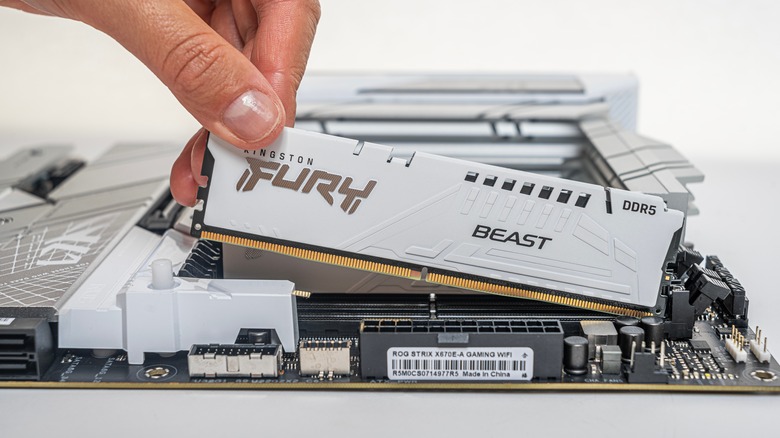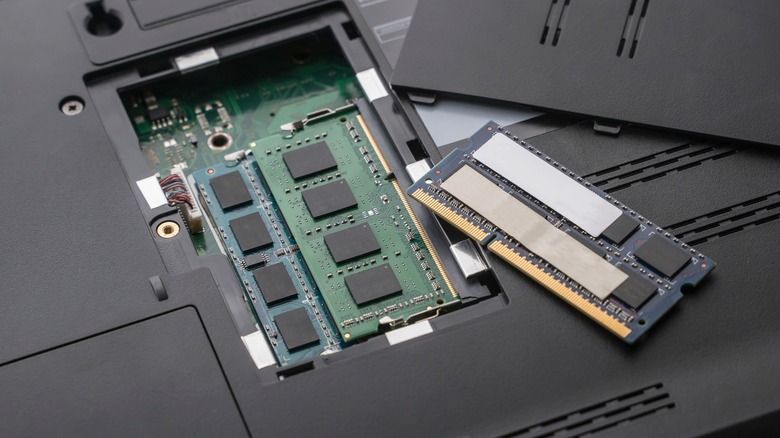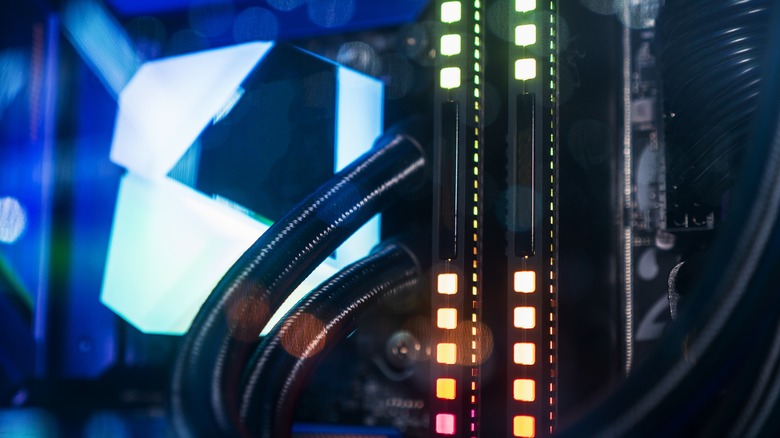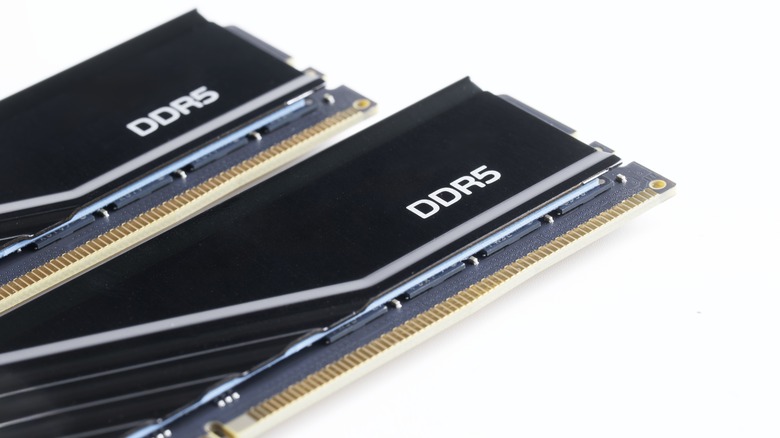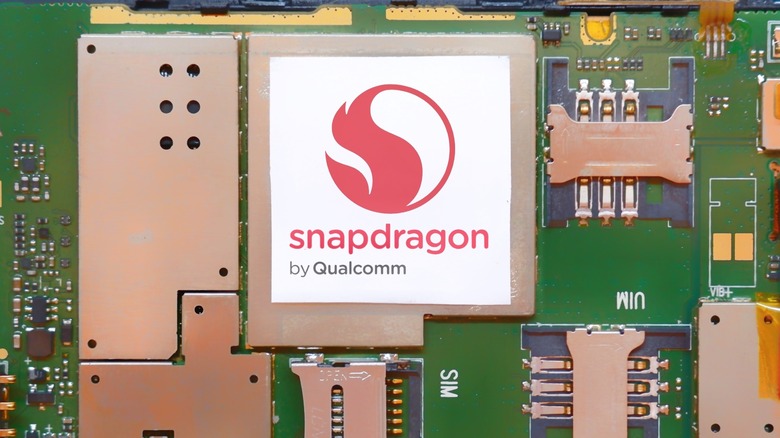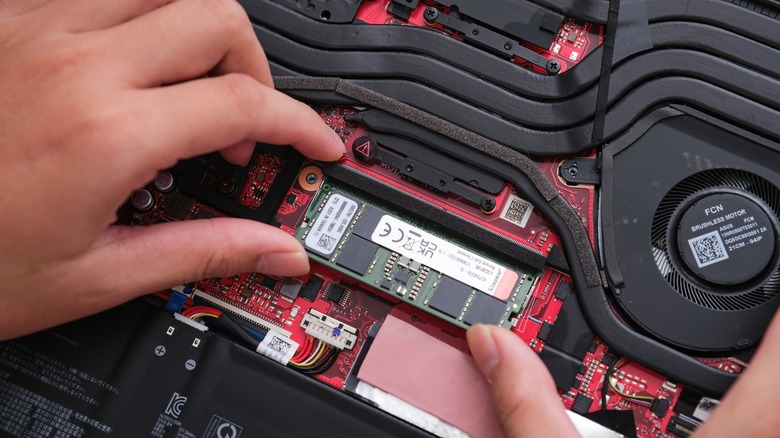What Does RAM Stand For & How Does It Affect Your Computer's Performance?
If you've ever been computer shopping, you'll undoubtedly have heard the term RAM thrown around willy-nilly. You might know a few things about RAM, such as that it's one of the most important parts in a computer system, or that more of it is generally better than less, but you might be a little fuzzier on what its precise purpose is. In this article, we'll break down the basics of this essential computer component so you can shop for your next machine with more confidence. We'll explain not only what RAM is, but also how it works on a non-technical level, how it impacts your computer's performance, and how much of it you need to make your computer run smoothly.
Let's answer the obvious right off the bat. RAM stands for random access memory, so called because the data stored on it is accessible by the system in any order. We'll explain this in further detail momentarily, but all you need to know as we head into a deeper dive is that this random access allows your computer operating system and apps to temporarily store files on the memory, which is why RAM relates to performance.
So, just what is RAM, how does it affect performance, what are the different types of it, and how can you be sure you're ready to confidently choose your RAM configuration the next time you shop for a computer? Keep reading to find out.
What is RAM?
RAM, or random access memory, is your computer's short term memory. It stores things your system needs ongoing access to — including files related to currently running programs or files that are necessary for your operating system to run — for as long as the computer has a power source. This is why putting your computer to sleep prevents all your apps from having to close, whereas shutting it off entirely means you'll need to reload them after starting it back up. RAM is quite different from your computer's storage, which is your computer's long term memory that permanently stores files until you delete them.
Your CPU is where your computer is doing the active work, but when the CPU needs to set data aside for later, it stores that data in the RAM. For instance, if you're going to edit a video in Adobe Premiere, the computer loads the necessary data into the RAM for quick access, and when you export the project as a video, it goes to your storage for safekeeping.
One point of confusion some people encounter around RAM is the idea that it is only relevant to laptop and desktop computers. In fact, every computing device in your life uses RAM, from the most powerful gaming PC to the cheapest Android handset or five dollar calculator from Walgreens. Along with the storage and processor, RAM is one of the central components to any computerized system.
How much RAM do I need and how much do I have?
Many people upgrading their computer wonder how much RAM they should get and how it's related to system performance. For high-end computers like gaming PCs, more RAM never hurts, and 32 GB is usually the minimum recommended specification, while 64 GB systems and even higher are becoming increasingly common. Meanwhile, for something like a smartphone, 8 GB is usually plenty. Flagship phones and tablets from companies like Samsung routinely include 12 GB or more to ensure that there's space for the system to operate at its most efficient.
Keep in mind, that if you're buying a laptop, you may not be able to upgrade the RAM or add more later, and the same is always true of mobile devices. If the computer you're interested in does not have upgradeable RAM, it's usually worth opting for a higher configuration to ensure you aren't bottlenecked by your RAM. For example, base level Mac configurations come with only 8 GB of RAM, whereas many applications require 16 GB or more, which has led to some contention among Apple's users. However, if you're building or buying a PC with upgradeable RAM, you can always purchase more later and install it easily.
If you're not sure how much RAM you currently have, most operating systems make it easy to check. On Windows, you can press CTRL+X, then click System from the menu. On MacOS, click the Apple menu, then click About This Mac. On Samsung Galaxy phones, it's in the Device Care section of Settings, while on stock Android it's in Developer Settings — here's how to enable developer options on Android.
How does RAM affect your computer's performance?
When it comes to figuring out the best RAM configuration for your PC, size isn't the only thing that matters. Of equal importance is the speed of the RAM, which is to say, how fast it transfers data. We'll look later at DDR generations and how each new generation enables higher speeds, but for now, you need to know that those speeds are expressed in mega transfers per second (MT/s), with the latest generation of RAM, DDR5, commonly capable of speeds such as 5,600 MT/s. You'll see this expressed on the packaging of memory sticks as DDR5-5600. Megahertz (MHz) are another common form of speed measurement you'll see when shopping for RAM. In either case, bigger numbers are better.
Numbers aside, you probably want to understand how RAM speeds affect your day-to-day computer use. Let's use Google Chrome, a memory-intensive application many people use, as an example. Assuming you have a capable CPU, running Chrome with low quantities of lower speed RAM will enable you to open only a handful of tabs at a time before your system starts to get sluggish. On the other hand, having high-speed RAM in higher quantities will enable you to open hundreds or even thousands of tabs. RAM can also affect loading times in photo or video editing, video export, and how many apps you can run at once. If you need to multitask, especially if that multitasking involves intensive programs like Chrome or Adobe Premiere Pro, you'll want fast, plentiful RAM.
What is DDR, such as DDR4 and DDR5?
When shopping for RAM, you'll begin to encounter even more confusing acronyms, and you'll almost certainly see the term DDR (Double Data Rate) mentioned frequently. Specifically, you'll see references to DDR4 and DDR5 RAM, which refers to the different generations of RAM. Just as computer processors get more advanced over time, so does RAM. In general, each subsequent generation of RAM becomes faster and more power efficient, with DDR5 being the latest and greatest at the time of writing.
RAM speeds are related to your central processor's clock speed, which is the number of cycles it makes per second, dictating how fast it can process instructions and make calculations. The RAM speed measurement, mega transfers per second (MT/s), is how many millions of times it can move data in and out. Moving all that data draws power, of course, so RAM manufacturers work to reduce the voltage needed with each generation.
Right now, DDR4 and DDR5 RAM are the most common in new computer systems. Introduced in 2021, DDR5 is the latest and a massive upgrade over DDR4, which dates back to 2014. It delivers nearly double the bandwidth over the previous generation along with much better channel and power efficiencies. Additionally, it can be operated in higher quantities, and you'll commonly find DDR5 memory sticks in 64 GB configurations. If you're looking for specific recommendations, check out our roundup of the best DDR5 RAM kits for gaming in 2024.
RAM on x86 versus RAM on ARM
While RAM is a part of every computer system, it comes in two distinct varieties. Discrete RAM is what most people picture when they hear the word. These are the individual sticks of memory you can buy at computer shops, which go into desktop PC builds and many Windows laptops using x86 architecture. However, newer Apple computers, iPhones, Android phones, and some of the newest Windows laptops do not use discrete components, instead operating on ARM, or Advanced RISC (Reduced Instruction Set Computing) Machine systems, that integrate all the important parts of a computer into a single chip. The most famous of these are currently the Apple M-series chips that power the latest Mac and iPad devices. ARM chips are a fascinating topic all on their own, but what matters here is that if you get an ARM device, you're stuck with the amount of memory it comes with.
However, because of the incredible efficiencies of ARM, Apple's M3 chip, which powers the latest MacBook Air, can operate with an integrated memory of only 8 GB. As mentioned above, this has caused contention among some Mac enthusiasts, but it's still powerful enough to run most apps without issue. Compared to x86 systems, that's impressive, and it's no surprise Microsoft has been working hard to make Windows on ARM a reality, culminating most recently in a collaboration with Qualcomm to ship Windows laptops, like the new Microsoft Surface lineup that run ARM processors such as the Snapdragon X Elite.
How often should you clear your RAM?
One common misconception about RAM is that clearing it will make your computer faster. While it's true that your computer gets slow when the RAM is full, flushing out your RAM won't actually help the situation in most cases. RAM holds information that makes your computer run faster — that's the entire point of it — and it builds up temporary databases to aid that process. Flushing or clearing your RAM erases those databases, forcing the computer to rebuild them, which can actually make it slower. To put it simply, RAM is there to be used. If you're having performance issues, it's more likely that the RAM is a bottleneck in your system and you simply don't have enough memory for your computer to do all the things you're doing with it.
Most operating systems allow you to view your RAM utilization so you can see how much of it is being used. For example, the Task Manager on Windows will display this information. If your computer is slow and you can see that the RAM is full, you probably need more RAM. However, if your computer is slow and there's still plenty of space in your RAM, the bottleneck likely lies elsewhere. Older processors or storage mediums can also be the cause of a slow system. That said, if you see that programs you have no use for are taking up space in your RAM, it can be a good idea to close them and give your memory some breathing room.
If you do want to clear space in your RAM, you can do so by fully rebooting your computer. This will flush the RAM cache, closing down all apps and services.
